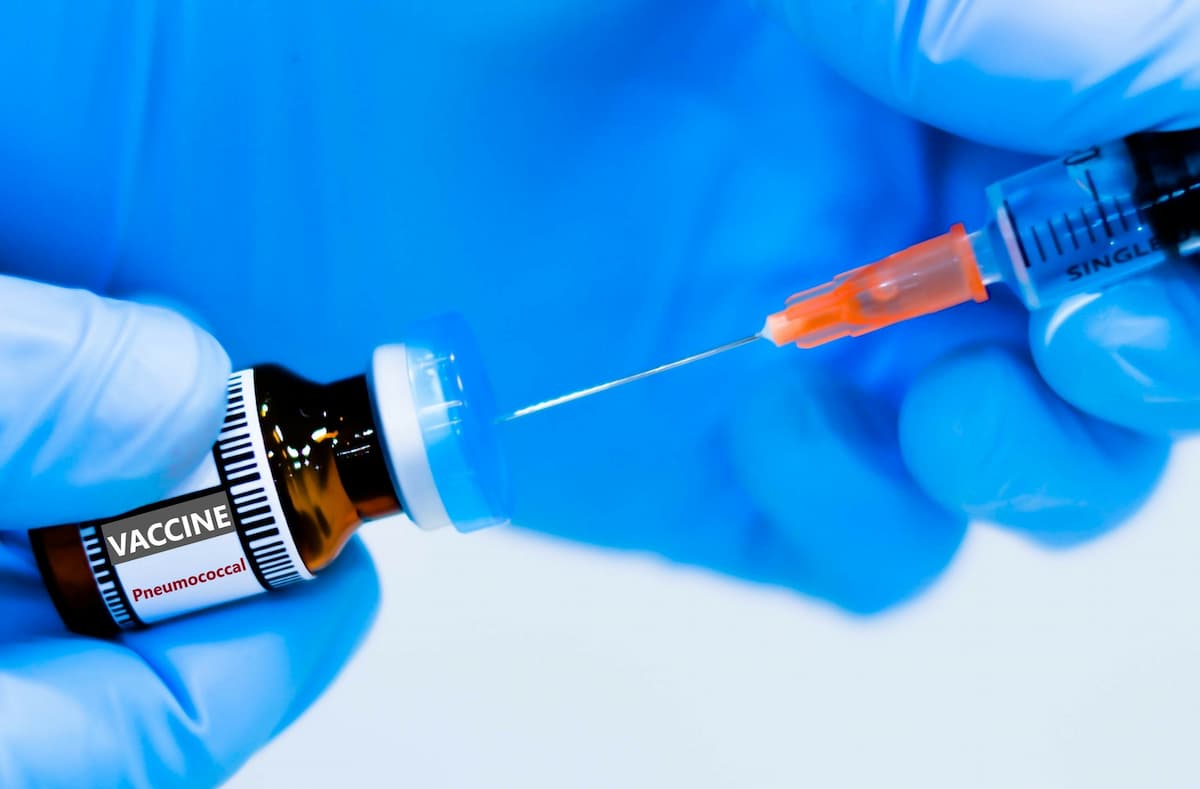Video
Current Vaccines for Pneumococcal Infection
Dr. Bridgeman highlights approved pneumococcal vaccines and their indications.
Ryan Haumschild, PharmD, MS, MBA: Let’s talk about critical insights on pneumococcal vaccinations. There are some vaccines available, and they’ve been available. I’d like to characterize that further, Ms Bridgeman, by having you describe the 4 FDA-approved pneumococcal vaccines in regard to their vaccine type and how their strains differ between vaccinations.
Mary Bridgeman, PharmD, BCPS, BCGP, FASCP: When I think about classifying types of pneumococcal vaccines, I think about 2 broad classifications available in the United States: the pneumococcal conjugate vaccine [PCV] formulations and the pneumococcal polysaccharide, or PPSV, formulation. We’ll talk about PCVs first. We’ve had a history of pneumococcal conjugate vaccines: PCV7, PCV13, PCV15, and now PCV20. These are vaccine products that contain purified capsular polysaccharides, or saccharides that are conjugated or linked with the diphtheria toxin. These vaccines are differentiated according to the number of pneumococcal serotypes they protect against. As our science and vaccine products have evolved, the number of serotypes these vaccine products are providing coverage against has also expanded.
The pneumococcal polysaccharide vaccine, the PPSV23—it gets to be an alphabet soup when we get into these—is a purified preparation of the pneumococcal capsular polysaccharides. It contains the polysaccharide antigen from 23 pneumococcal bacteria. These vaccines protect against many—but importantly not all common—serotypes of pneumococci. They have significant but not 100% efficacy. There’s still a chance that an individual who has been immunized may develop pneumococcal disease even after vaccination.
Ryan Haumschild, PharmD, MS, MBA: There are a lot of great vaccines out there. We’re trying to get them into our workflows, in front of the right patients, but we have to remind ourselves when they’re indicated and whom are they indicated for. That’s a lot sometimes with primary care. We’re putting a lot on them, screening for comorbidities, and are you aware of these guidelines? How do you stay on top of vaccinations? The more we can explain the differences between the vaccines, whom they’re indicated for, and when they’re indicated makes a lot of difference. We’re lucky that we have ACIP [Advisory Committee on Immunization Practices] recommendations, but reviewing those is always a great place to start. Ms Madison, as someone who has a lot of expertise in this space, who are the pneumococcal vaccines indicated for? Describe some ACIP immunization schedules for these vaccines.
Christina Madison, PharmD, FCCP, AAHIVP: Before I get started with that question, I want to answer the question that in the intro: how do you know, how do you find out, how do you keep up to date? You ask your pharmacist.
Ryan Haumschild, PharmD, MS, MBA: There you go.
Christina Madison, PharmD, FCCP, AAHIVP: We’re the ones giving these out most of the time, or we’re getting recommendations from our physician colleagues to help us because we know these patients are at risk. They don’t have the ability to provide them with all those services all at 1 time. I wanted to take a moment to say that quickly.
To answer your question, first, the fact that we have so many options right now, that’s coverage. As we know, the more we give vaccinations, the more we start seeing a selection of the serotypes that aren’t in the vaccine. About 80% of all our infections are from serotypes that are included in the vaccinations that we have. It’s incredible that we have the ability to make such a big difference to prevent this type of infection in our patients. Who is that? Who are the big individuals we’re talking about? Obviously, it’s very similar to what we talked about with who’s at risk. I want us to think about the vaccination schedule as your best friend.
Also, there’s an app. I always like to talk about the app because the app is very helpful. You can put in what vaccinations patients have already had, their age, if they have a risk factor, and then it tells you which 1 you need to give today. We’re using that, using our state vaccination registries, and making sure we’re using our EMRs [electronic medical records] so we can get a definitive picture.
The vaccine schedule is divided into 2 charts. One is going to be age based, and the other is going to be based on medical conditions or indications. Honestly, when we look at that chunk that’s pneumococcal, it’s almost all. It’s easier to say whom it’s indicated for vs whom it is. At this point, those who don’t have a specific indication, if you look at that chart, are health care workers and men who have sex with men or same-gender-loving individuals if they don’t have additional risk factors. Anyone who could be at risk for an invasive pneumococcal disease is going to be part of the vaccine schedule.
When we’re reading the vaccine schedule, the big thing to emphasize is not to forget about the footnotes. Footnotes are your friend. That’s going to help you distinguish if it’s time for PCV15. A year later, PPSV23. Can I get away with just PCV20, or do I have to give PPSV23 and wait until they’re age appropriate to do the PCV20 or the combo? We need to think about how we get to the heart of this. Footnotes are your friend. First, is your patient eligible? Most of the time that’s going to be a yes. After that, how do we decide among the 4 products that we have? It’s really 3 because we’re transitioning away from PCV13 as we filter that out from the pediatric side, but for adults we’re playing in the sandbox with the 3. How do you find that? Go to the footnotes.
Mary Bridgeman, PharmD, BCPS, BCGP, FASCP: I want a T-shirt that says, “Footnotes are your friend,” I love that. That’s fantastic.
Christina Madison, PharmD, FCCP, AAHIVP: Right. I might be branding that.
Ryan Haumschild, PharmD, MS, MBA: Footnotes are definitely a key takeaway. The first thing I’ll do is looking at the footnotes when I get back to the office to make sure I’m aligned. I appreciate you sharing that because there’s a lot of information to sift through. A lot of individuals may be indicated. As we drill down further and think about specific groups, Ms Bridgeman, what the updated ACIP recommendations for pneumococcal vaccination for adults aged 65 and older or even high-risk adults who are ages 19 to 64?
Mary Bridgeman, PharmD, BCPS, BCGP, FASCP: For individuals who have never received a pneumococcal conjugate vaccine, the CDC recommends PCV15 or PCV20 without a preference for formulation for adults aged 65 years or older and for adults aged 19 to 64 who have indications with certain medical conditions and risk factors. It’s important to note that if PCV15 is used as that initial vaccine, this should be followed with 1 dose of PPSV23 a year or more later, depending on the individual’s risk. Adults 65 or older also have the option of being immunized with PCV20 if they’ve already received a complete pneumococcal vaccine series. In the context of a pneumococcal vaccine, a complete series is defined as PCV13 but not PCV15 or PCV20 at any age, and then PPSV23 at or after the age of 65 years. This recommendation and the decision about whether that individual chooses to become immunized with a single dose of PCV20 needs to be a shared decision between the individual and their health care professional in terms of evaluating risks of disease, thinking about living arrangements and the individual’s living situation, and even the timing of when they had received previous doses of the pneumococcal vaccine.
Ryan Haumschild, PharmD, MS, MBA: I like how you described the significance of patients receiving PCV20 after already receiving PCV13 and PPSV23. That’s helpful for listeners to understand.
Transcript edited for clarity.






